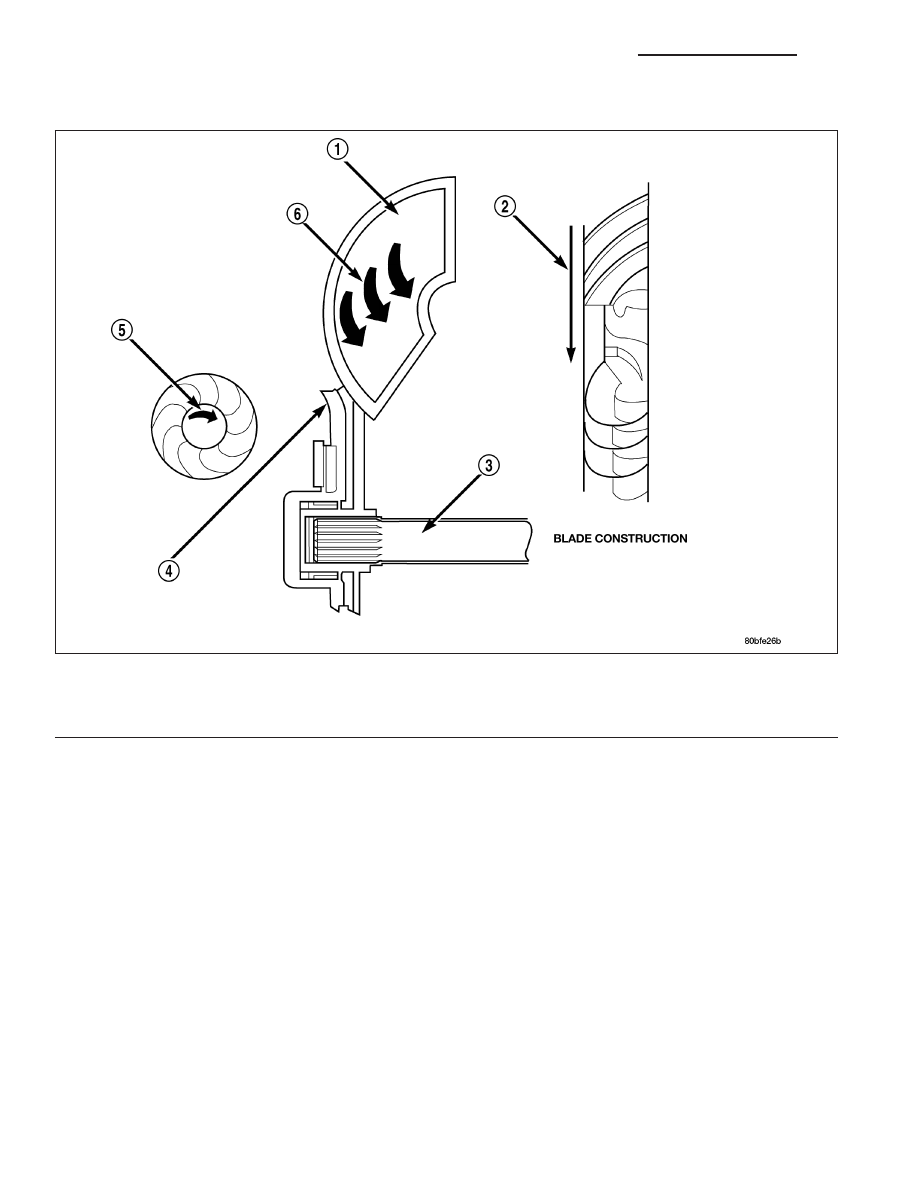Content .. 1404 1405 1406 1407 ..
Jeep Grand Cherokee WK. Manual - part 1406

TURBINE
The turbine is the output, or driven, member of the converter. The turbine is mounted within the housing opposite
the impeller, but is not attached to the housing. The input shaft is inserted through the center of the impeller and
splined into the turbine. The design of the turbine is similar to the impeller, except the blades of the turbine are
curved in the opposite direction.
Turbine
1 - TURBINE VANE
4 - PORTION OF TORQUE CONVERTER COVER
2 - ENGINE ROTATION
5 - ENGINE ROTATION
3 - INPUT SHAFT
6 - OIL FLOW WITHIN TURBINE SECTION
21 - 434
AUTOMATIC TRANSMISSION - 545RFE - SERVICE INFORMATION
WK